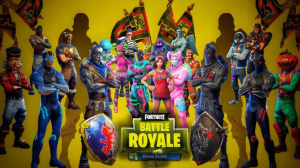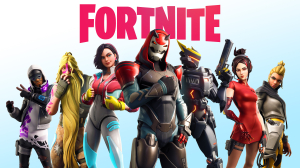
In the realm of gaming, few names have been as disruptive and revolutionary as Fortnite. Since its launch in 2017, Fortnite has not only dominated global game rankings but has completely reshaped the landscape of e-sports. Developed by Epic Games, it brings to life an immersive world where players battle for the right to be last. A fusion of strate...




Fortnite
In the realm of gaming, few names have been as disruptive and revolutionary as Fortnite. Since its launch in 2017, Fortnite has not only dominated global game rankings but has completely reshaped the landscape of e-sports. Developed by Epic Games, it brings to life an immersive world where players battle for the right to be last. A fusion of strategic thinking, environment interaction, and shooting prowess, this game offers an accessible platform for players of all skill levels - from novices to competitive gamers. With its unique aesthetics, engaging gameplay, and constant stream of updates, Fortnite has achieved a gargantuan player base, making it one of the most played games in recent years.
Gameplay: More Than Just A Battle Royale
At its core, Fortnite is built around a battle royale concept, where 100 players are dropped onto a constantly shrinking map, and the last person (or team) standing is the winner. What sets Fortnite apart from its contemporaries is its construction aspect. Players can collect materials from the environment and use them to build structures – walls, ramps, floors, and roofs. This feature, combined with the game's combat mechanics, gives birth to an exciting mix of offensive and defensive strategies. Players must ceaselessly adapt to combat variables and the ever-evolving playing field.
A closer look at Fortnite's gameplay reveals an intricately layered mechanism that extends beyond traditional gunfight and survival elements found in the common battle royale-style games. The gameplay in Fortnite is set in three distinct modes - Battle Royale, Save the World, and Creative - each offering a unique experience to the player.
Battle Royale is the most popular of the three, where up to 100 players enter the game solo, in duos, or with a squad, with the goal of being the last player or team standing. Participants are airlifted onto an expansive island filled with towns, forests, and water bodies, starting with only a pickaxe. They must then navigate through the landscape, looting weapons, shields, and resources while combating enemy players. Fortnite adds an interesting mechanic in this mode: a randomly placed storm that slowly shrinks the map, forcing close encounters between players and making the game intensely dynamic.
Unique to Fortnite is the building system integrated into the combat scenarios. This gameplay mechanic allows players to harvest raw materials from virtually anything on the island. Using these materials, players can build ramps, walls, roofs, and floors to gain an advantage over the enemy. It can form an integral part of the defensive strategy, providing quick cover during fights or can be used to gain vertical elevation for a better overview and control of the battlefield.
In the ‘Save the World’ mode, players team up to battle against computer-controlled creatures, accomplish objectives, and protect vital points. This mode revolves around strategy, resource management, and cooperation, offering a more PVE (player versus environment) experience.
The third mode, 'Creative', provides a sandbox experience where players can use the game’s building mechanics to construct their own worlds. This mode extends maximum creative freedom to the players, enabling them to create custom maps and mini-games. From building vast architectural dreamscapes to designing rigorous obstacle courses, the limit is the player's imagination itself.
Fortnite consistently integrates unique features like Limited-Time Modes, event-specific challenges, and themed events. These elements have become instrumental in Fortnite, keeping the gameplay fresh and players on their toes. The conceptual dexterity of Fortnite's gameplay makes it a game that captures both the caprice of casual play and the intensity of competitive gaming.
Weaknesses
Even with its impeccable gameplay and fun quotient, Fortnite does have its share of weaknesses. The game's heavy reliance on in-game purchases can deter some players. Although it's free to play, a significant part of the game, including the coolest skins and emotes, is locked behind a paywall. Moreover, Fortnite's continual evolution can be difficult for casual players - trying to keep pace with constant map changes, new weapons, and shifting gameplay meta. Lastly, some players have reported instances of matchmaking system issues, where new or less skilled players face off against experienced or professional players, making the game excessively challenging.
Final Judgment
In terms of user impressions, Fortnite stands as a crowning exhibit of how to create a compelling, engaging, and social gaming platform. It has established itself on the good side of many players because of its interactive gameplay and the sheer joy of outsmarting opponents.
Despite some negative feedback concerning the pay-to-win elements and constant game-changing updates, the consensus remains that Fortnite delivers an adrenaline-infused gaming experience like no other. In a nutshell, Fortnite's blend of streamlined combat, strategic building mechanics, and immersive sandbox environment continues to wow the globally diverse player base, making it an undisputed titan in the realm of battle royale games.
- A unique blend of shooting and building elements
- Free-to-play model
- Regular content updates
- Supports cooperative gameplay.
- Heavy reliance on in-game purchases
- Overwhelming updates and changes
- The matchmaking system is sometimes unfair
- A high skill ceiling can deter new or casual players.


